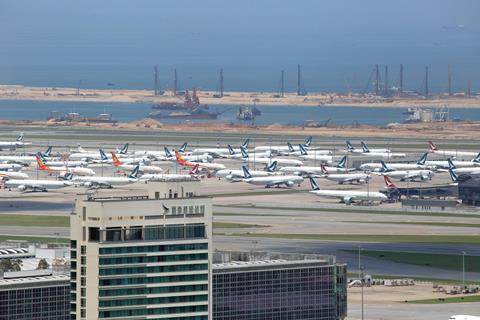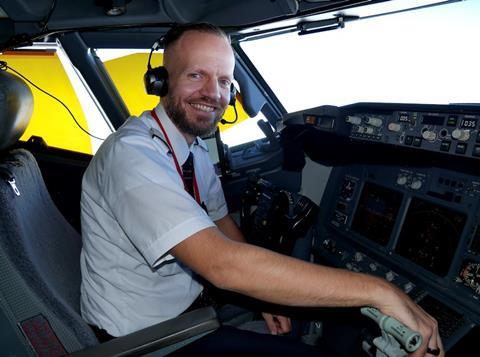While most pilots have developed a set of marketable skills for a life outside the cockpit, certain traits are not always as valuable, argues Martin Stork, a Boeing 737 Captain who also operates a coaching practice to support pilots in transition between career paths.
Modern airliner design is based on redundancy of safety-critical components like hydraulic or electrical systems. For now, you will also find two pilots in the cockpit for much the same reason. Highly trained, constantly checked and equipped with a myriad of skills, pilots are having a hard time of it at present. But it is worth remembering that some of these skills – leadership, complex problem solving, communication – are entirely transferable and highly sought-after.
For those facing the unwelcome prospect of redundancy, this should offer hope for a life outside the cockpit.

But pilots don’t always appreciate the full spectrum of capabilities they’ve developed over the course of their careers. And the ‘pilot mindset’, adopted over many years of professional flying, might present another, bigger obstacle in the path towards new professional (and private) freedom.
Being exposed to the dynamic working environment of the flightdeck, while being subject to the collective consciousness – the way of thinking – of the aviation industry, creates a certain mentality.
For pilots, this mentality does not stop at the cockpit door, but carries on as subconscious autopilot modes offering both pros and cons.
Certain qualities like leadership, decision making and an ability to cope with highly stressful situations are all positive traits, but there are other others which are more hindrance than help.
For instance, pilots – as you might expect – are not risk takers, instead seeking to mitigate a problem. There is also a tendency towards a lack of innovation or creativity and an instinct to avoid challenges – instead seeking to land at the nearest suitable airport.
And pilots deprived of their dream job, and the respect that comes with it, can also suffer from a lack of identity once they are no longer in the cockpit or in uniform (a problem better known as ‘epaulette syndrome’).
Awareness of these factors, both positive and negative, is key. How does that unique mindset affect decision making when the cockpit is no longer the centre of a pilot’s world?
The first step for flightcrew wanting to actively engage in exploring professional career options outside the cockpit is acceptance; to make peace with the situation.
Once that’s done, it’s important to establish the ‘fuel reserves’: how long can you continue before your tanks are running dry, forcing you to accept any job to bring in cash-flow?
That depends on the individual, but at the end of the day, the formula is simple: current cash reserves divided by monthly costs = time available to manoeuvre.

Many have become a victim of the ‘nearest suitable airport’ mentality: instead of taking time to reflect, strategise and create a plan, they opt for the closest available employment option in fields that require trivial qualification. Naturally, competition in these jobs is by far greater and pay is generally lower too.
That’s why it’s so important to sit down, together with any interested parties, and strategically lay out a vision.
This three-year plan should account for your strengths, your skills, your values as well as identifying any educational gaps that need to be filled. The next step is to craft your career narrative, which tells the story of your professional journey so far. When drafting your story, check that against your reasons for picking this new career path.
Employers will want to hear why you are exploring new opportunities and whether it’s likely you will leave for the first flying opportunity that presents itself. To put it another way - why are you investing all this time and energy in a new path, if you are ready to leave again at the drop of a peaked cap? Find genuine reasons why you would like to work in a different area outside the cockpit. Remember: reasons are different to excuses.
Along that path you might discover the downsides that come with a being a pilot: irregular working hours, jet lag, and time away from home, from friends and family.
Plus, you have limited control over your life: your roster, your base, your pay, your terms and conditions, your leave. As an individual, you have simply been trying to optimise those factors. So ask yourself again: will you just disqualify new opportunities that are in front of you and return to a place of limited control?
It is essential, therefore, that pilots build resilience around their careers. Resilience is critical to not only circumnavigate industry downturns but also to regain control over your professional life.
Looking ahead, pilots have another threat looming: total automation. The technology for fully automated flight is already available today and Airbus, and others, have already successfully performed flights without pilots in the cockpit.
The pandemic is already being used by airlines to massively increase pressure on terms and conditions for their crews. Cockpit roles that might be offered in 2024 will, therefore, be different from the ones wiped out in 2020.
On that basis, pilots must prepare themselves and make the best use of their time to overcome their inner resistance and create resilience around their careers.
If you are a commercial pilot and would like to write for FlightGlobal then we would love to hear from you. Just send us a brief outline of what you’d like to cover and we will get back in touch. We are happy to use your contributions anonymously where necessary. Email: dominic.perry@flightglobal.com




















